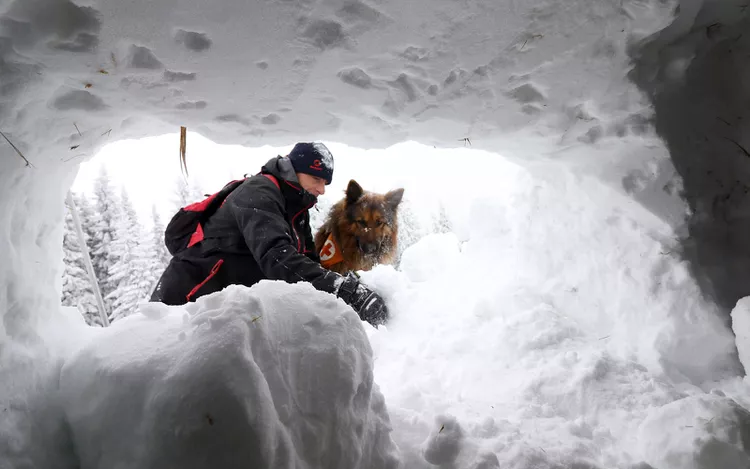And preventative measures you can take before heading out into snowy terrain.
It’s only the beginning of March, but this year has already seen an unfortunate share of avalanches.
Cascades recently struck two California ski destinations, USA Today reported, resulting in partial burials, minor injuries, and one harrowing – but fortunately successful – effort to save a snowboarder buried in the fall.
However, avalanches and snow burials do not always end so well. This past January, a 36-year-old husband and father died in an avalanche while snowmobiling in Idaho, and on Sunday, three feet of snow slid off the roof of a condo and killed a mother and her 7-year-old son.
Ski season is still in session, but with all of these tragic events occurring in such quick succession, it’s worth learning what you can do if you’re out on the slopes and the unthinkable happens.
Below, discover six essential actions you can take to increase your chances of surviving an avalanche.
1. Move to the Side
Once you see an avalanche heading your way, do not attempt to outrun it. The Clymb recommends running perpendicular to its path to avoid being caught in the middle. If the avalanche begins beneath your feet, act quickly and try to jump upslope, above the fracture line.
2. Grab Something Sturdy
Boulders and trees may not offer much protection in a major avalanche, but during less powerful cascades, they can help you remain steady. Try to hold onto a tree branch or sturdy rock to keep yourself anchored in one location.
3. Swim
To avoid being buried under snow and debris, stay on top of the avalanche. Use all of your strength to swim with the current. If you struggle to stay afloat, Mental Floss suggests “violently thrashing around so you don’t sink” as a viable survival tactic.
4. Hold One Arm Up
It’s advisable to keep one arm raised so, if you are buried, you can assist rescue teams in locating you.
5. Create Room to Breathe
Most avalanche-related fatalities stem from asphyxiation. If you’re caught in an avalanche, cup your hands over your mouth while still moving. According to The Clymb, this action can “create a small pocket of air for you to survive on for up to 30 minutes.” Additionally, try to dig out some space around your face for extra breathing room when the avalanche subsides. “Expanding your chest by filling your lungs with air” will also help.
6. Stay Calm
You might feel the instinct to panic, but it’s essential to remain calm. Mental Floss notes that if you panic, your breath will quicken, filling your limited space with too much carbon dioxide, thereby reducing your survival window. Therefore, try to breathe steadily to give rescue teams as much time as possible to find you.
Consequently, the best way to enhance your chances of surviving an avalanche is to take precautions before venturing into the snow. If you are a skier or snowboarder, or visiting mountainous regions known for avalanches, stay informed about the latest weather updates. Check the weather forecast as well as the local Avalanche Information Center website.
Veteran mountain weather and avalanche forecaster Scott Toepfer warns against blue-sky syndrome. “We may have a storm raging through the mountains in the morning, but after the storm clears, we’ll start to see beautiful blue-sky days,” Toepfer explained. “People often think, ‘It’s an incredibly beautiful day. We have fresh snow. Let’s go ride!’ Yet they ignore the preceding storm that created fresh avalanches, waiting to be triggered.”
When you enter the mountains, do not forget to carry an avalanche beacon. These devices function similarly to radios: they transmit frequencies and can alert other beacon users to your exact location. Having a beacon could be the crucial difference between life and death while awaiting rescue.
